I admit, when this article (“go volunteer and write about it!”) was first assigned to me, I felt a slight sense of dread. Some of the volunteer sessions were held on weekends, and weekends have always been super precious to me.
Nonetheless, work was work, and since I was curious about volunteerism, I obliged. Before embarking on the first session, I went to the Youth Corps Singapore website to get a better understanding of what I was in for.
I discovered that youths could sign up to be a Volunteer Befriender (VB) or Volunteer Coordinator (VC). The former is a role that involves closer interaction with the people receiving help, while the latter is a leadership role.
For this assignment, I got the chance to experience a VB role for three volunteer sessions in the first half of June.
Day 1
June 4, 2018
Activity: Teach seniors how to use the e-Payment system on their phones at the Lifelong Learning Institute
It was 8:30am, and as I sat inside the auditorium waiting for the programme to start, I tried to familiarise myself with the DBS PayLah app.
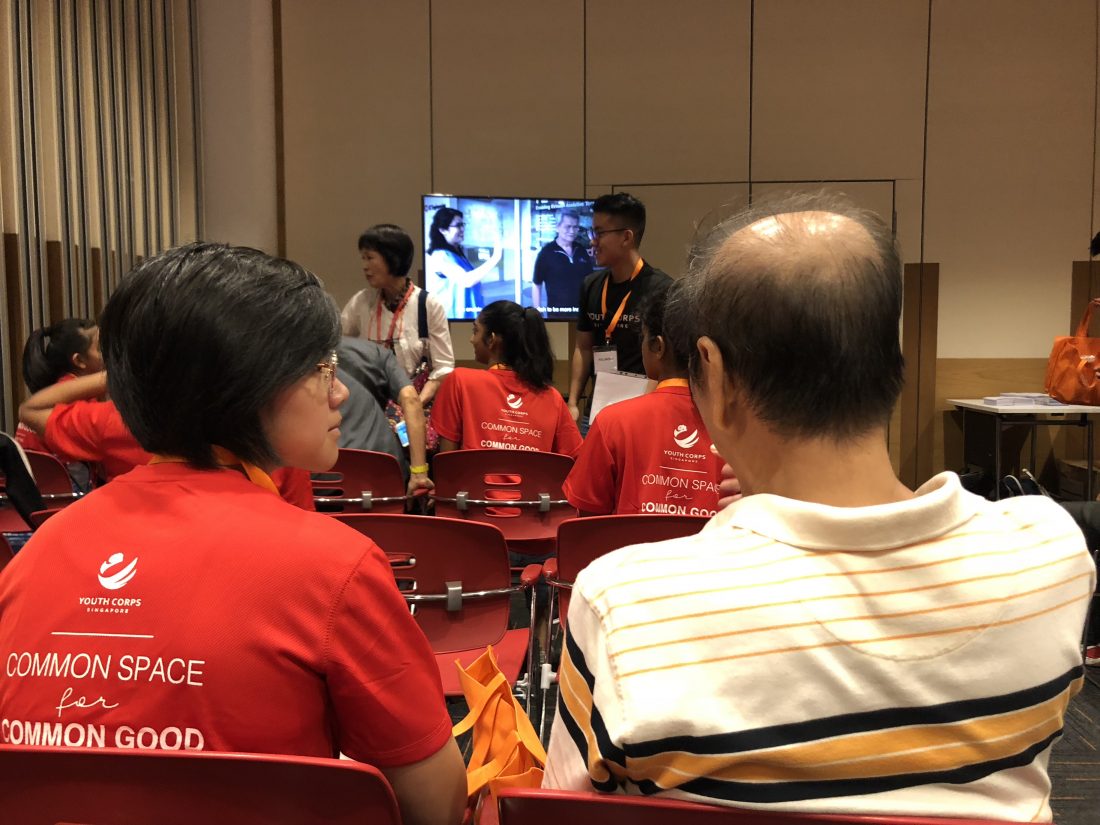 A VB with a senior she was tied to
A VB with a senior she was tied to
I was introduced to my VC, a 23-year-old undergraduate named Iris, who briefed me on what was going to happen. After teaching the seniors how to use the app, we were to bring them on a “practical” lesson to the MRT station (for NETS top-up), and then to a coffeeshop (for QR code scanning).
The first senior I was tied to was Mr. Tan, an eager and inquisitive man in his 70s. Between e-Payment talks, he asked me what I do, and showed me pictures of his grandchildren. To keep up with his questions, I quickly showed him the steps on how to use the app.
Sustainability in volunteerism
During lunch, I asked Iris, who volunteers several times monthly (on good months), why she volunteers.
Part of me thought she would launch into a speech about the benefits of volunteering, but she actually paused for a bit before saying simply, “There’s so much that can be done for so many people who need help. I’m just trying my best to help as much as I can.”
Iris’s first experience was at an orphanage for children with disabilities in China, when she was 16.
“However, after that experience, I felt like I didn’t make big enough a difference. When I came back to Singapore, I was like, ‘so that’s it?’ It made me want to do more, so I started looking for other volunteer programmes I could join.
To me, volunteerism has to be sustainable. I don’t want to just do it a couple of times and live my life thinking I’ve helped the society. I think volunteering is something that needs commitment. Of course, it doesn’t have to be a weekly thing. Even just doing it once every few months is good enough,” she explained.
Brandon, another VB who was in our group, shares the same sentiments.
“It’s important to think about the effects of volunteering in the long run. For example, if we help build houses in another country, we also have to think about how the locals can maintain the homes after we’re gone,” he said.
I tried to apply that to my volunteer session that day. Would the seniors forget how to use the app by the end of the day? What can I do to make sure that they really understand the workings of cashless payment?
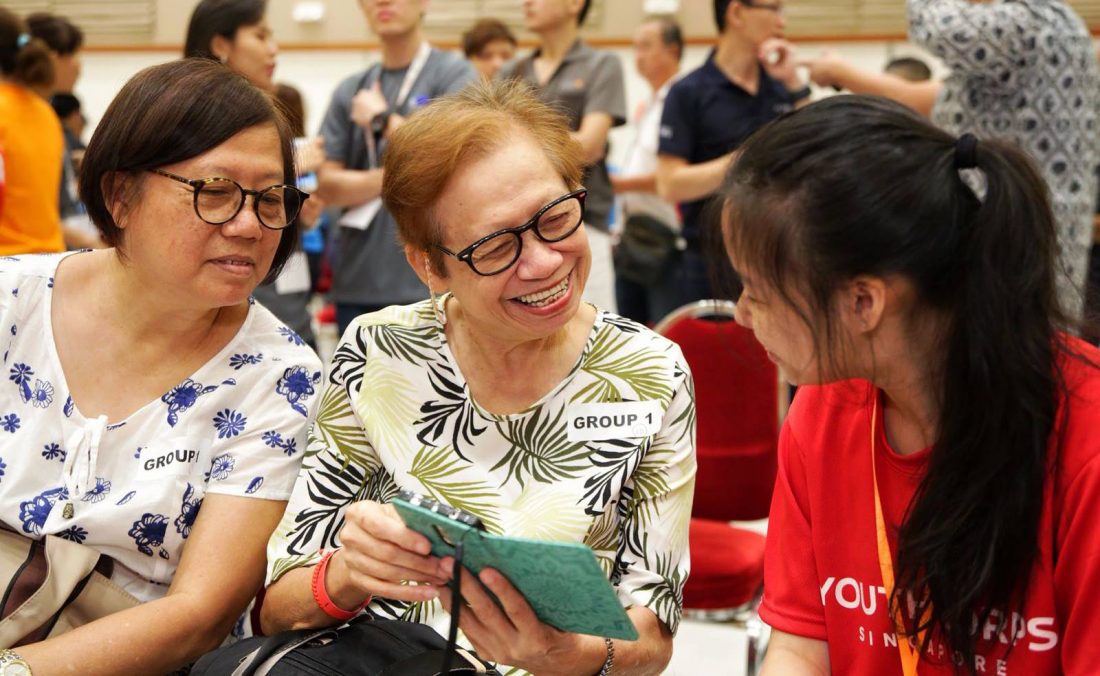 via YCS
via YCS
I was then attached to Mr. Ng, also a man in his 70s. This time, I made sure to get him to press the buttons himself, instead of just showing him -- unlike what I did with Mr. Tan.
When I told him to repeat the steps for me, I was a little afraid I would come off as condescending, but he happily obliged.
“So do you think you’ll use cashless payment after this?” I ventured.
“It’s actually not that difficult, and the concept is less foreign to me now. I will go home and try okay,” he replied in chinese.
Day 2:
June 9, 2018
Activity: Engage the elderly at the Moral Home for the Aged Sick (MHFTAS) in light physiotherapy and bring them out to a nearby hawker centre for lunch
The second session started out with some icebreaker games, and I discovered that amongst the students and youths waiting to enter university was James, an NSman.
It’s 845am on a Saturday, wouldn’t most NSmen prefer to sleep in or meet their friends?
That was my immediate thought after he introduced himself.
Physiotherapy and lunch
We were then briefed on the events of the day by a VC and a representative from MHFTAS.
“We’re really grateful that you guys are here to help as the seniors really look forward to such outings. Being out and having the chance to interact with different people really lift their moods,” the MHFTAS representative said.
Hearing this made me reflect on the selfish thoughts I had. Here I am at this volunteer session because I need to be here, but the seniors and even the staff at MHFTAS are thanking us for being present.
I don’t deserve their gratitude.
After a quick lesson on how to handle the wheelchair, we moved to a large area to start physiotherapy exercises and games with the elderly.
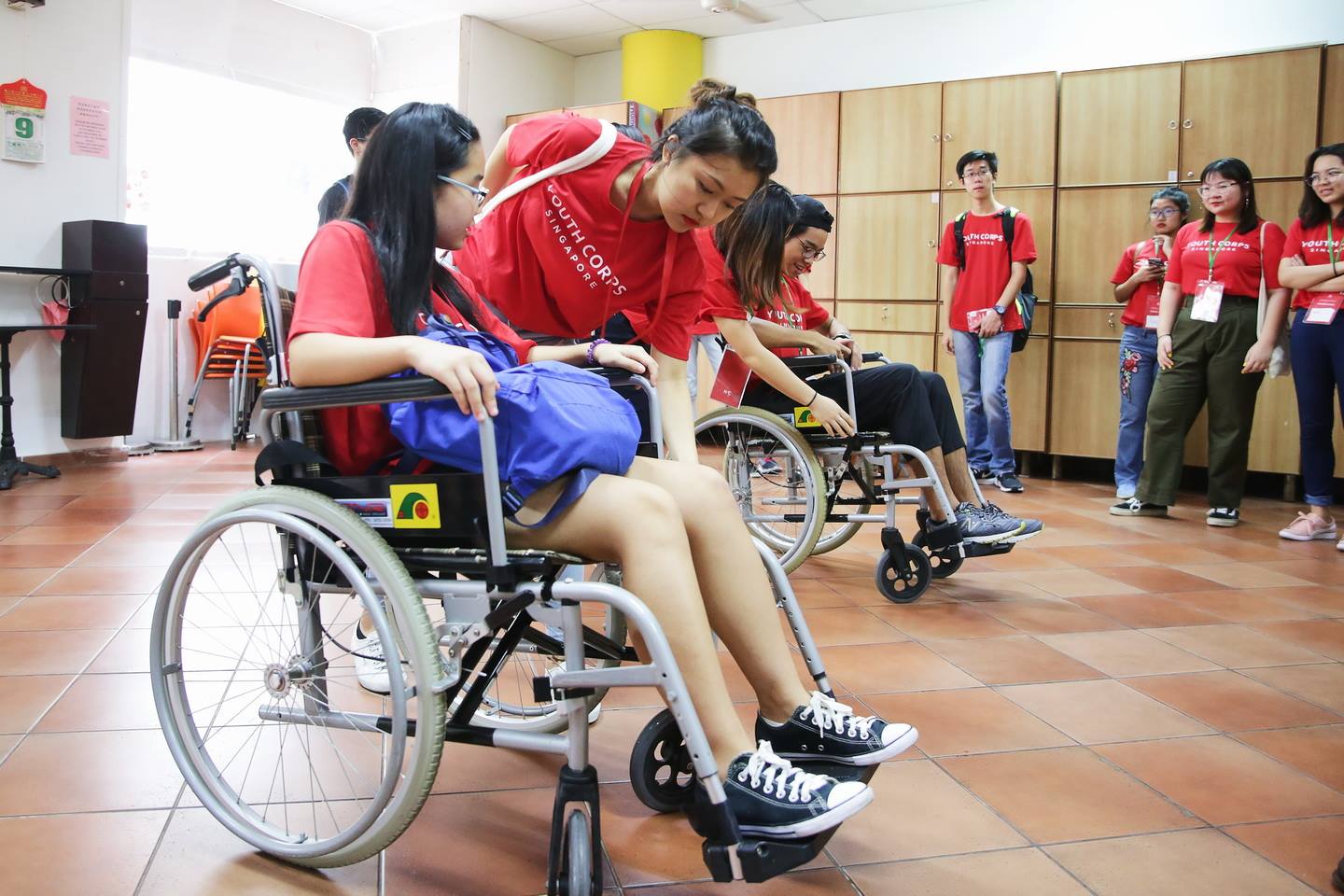 It was my first time handling a wheelchair, so I was a little nervous. Via YCS
It was my first time handling a wheelchair, so I was a little nervous. Via YCS
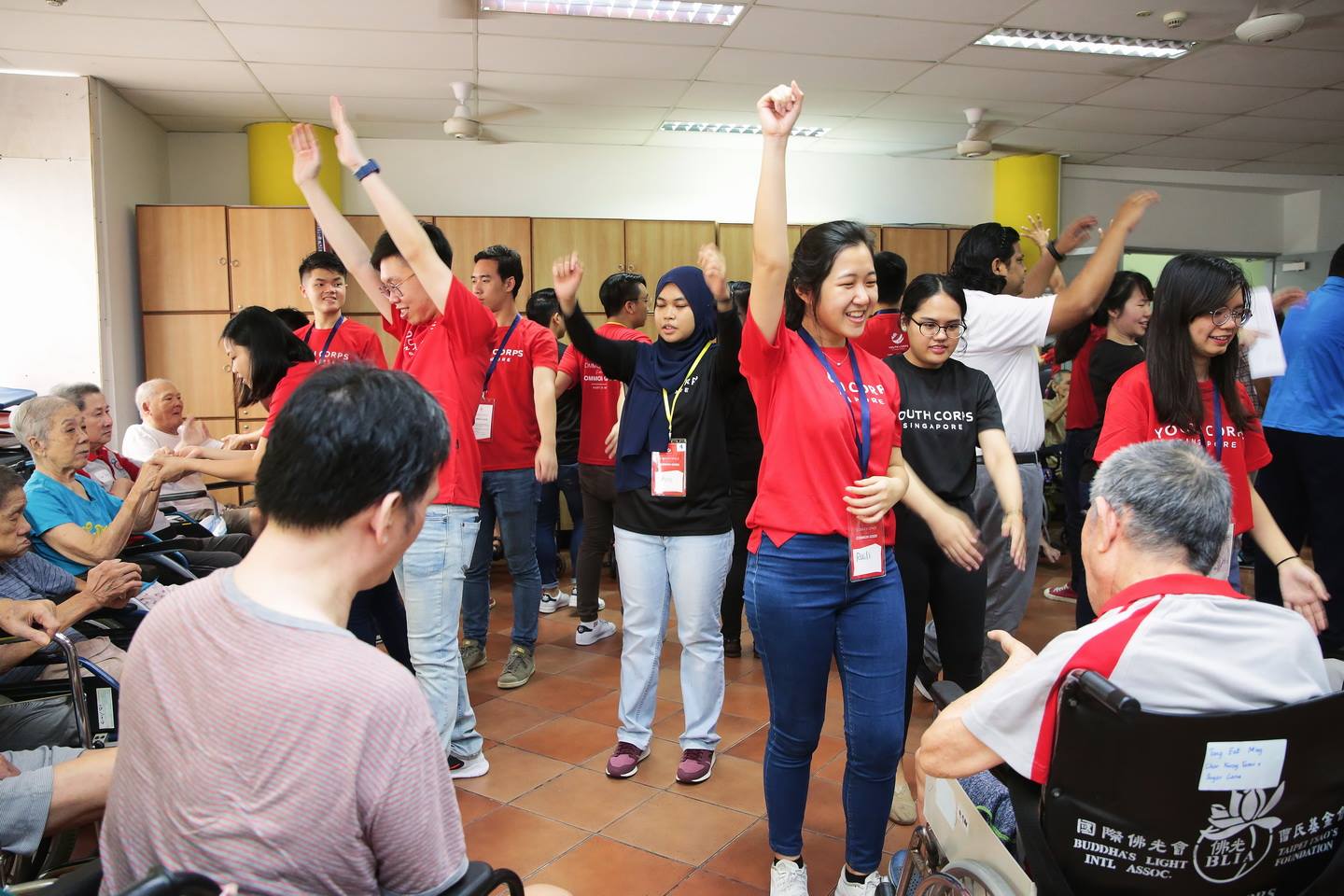 via YCS
via YCS
As the seniors at MHFTAS were older, they were not as verbally responsive as the seniors from the previous e-Payment session.
Instead, they responded in a different way. At one point during physiotherapy, I paired up with an elderly lady who couldn’t really speak -- she communicated with me by holding my hand and smiling, which genuinely warmed my heart.
The session was also attended by President Halimah Yacob, who engaged the seniors in games and conversations.
The seniors around me got really excited when the president approached them, especially the elderly lady I was with. She started moving about and pointing at the president.
 via YCS
via YCS
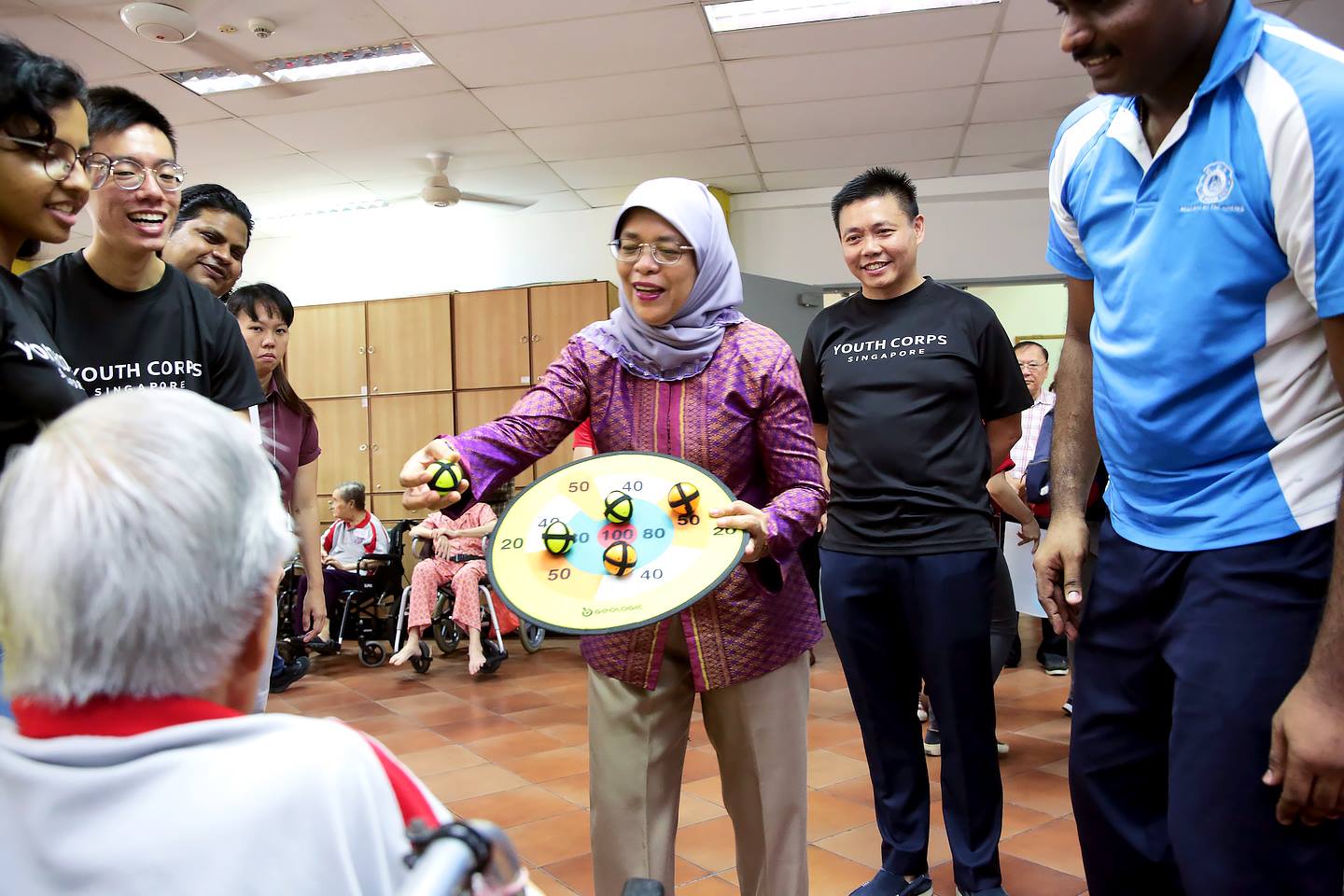 via YCS
via YCS
To know more about the youth volunteers and what they do, President Halimah Yacob had a chat with some of them.
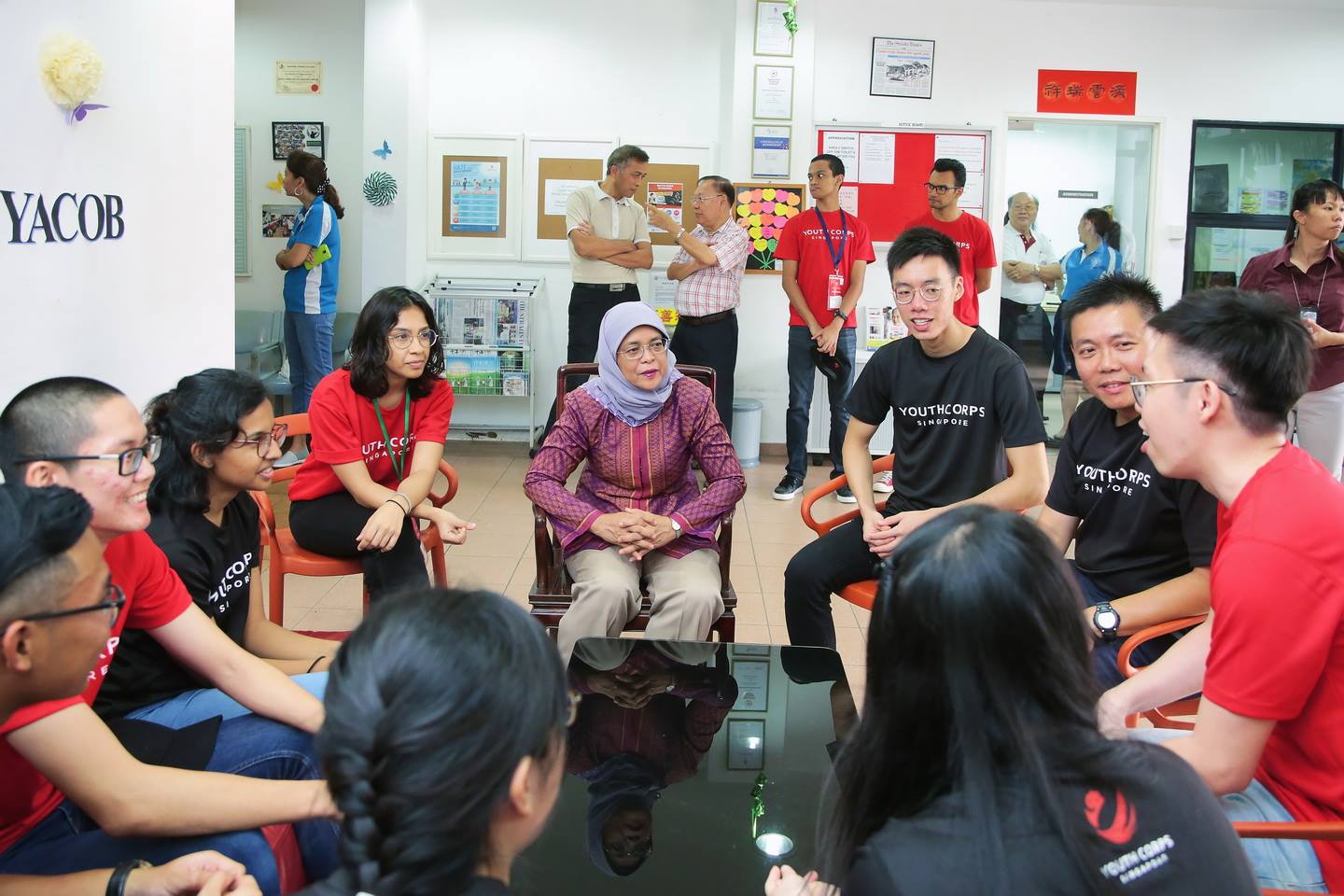 via YCS
via YCS
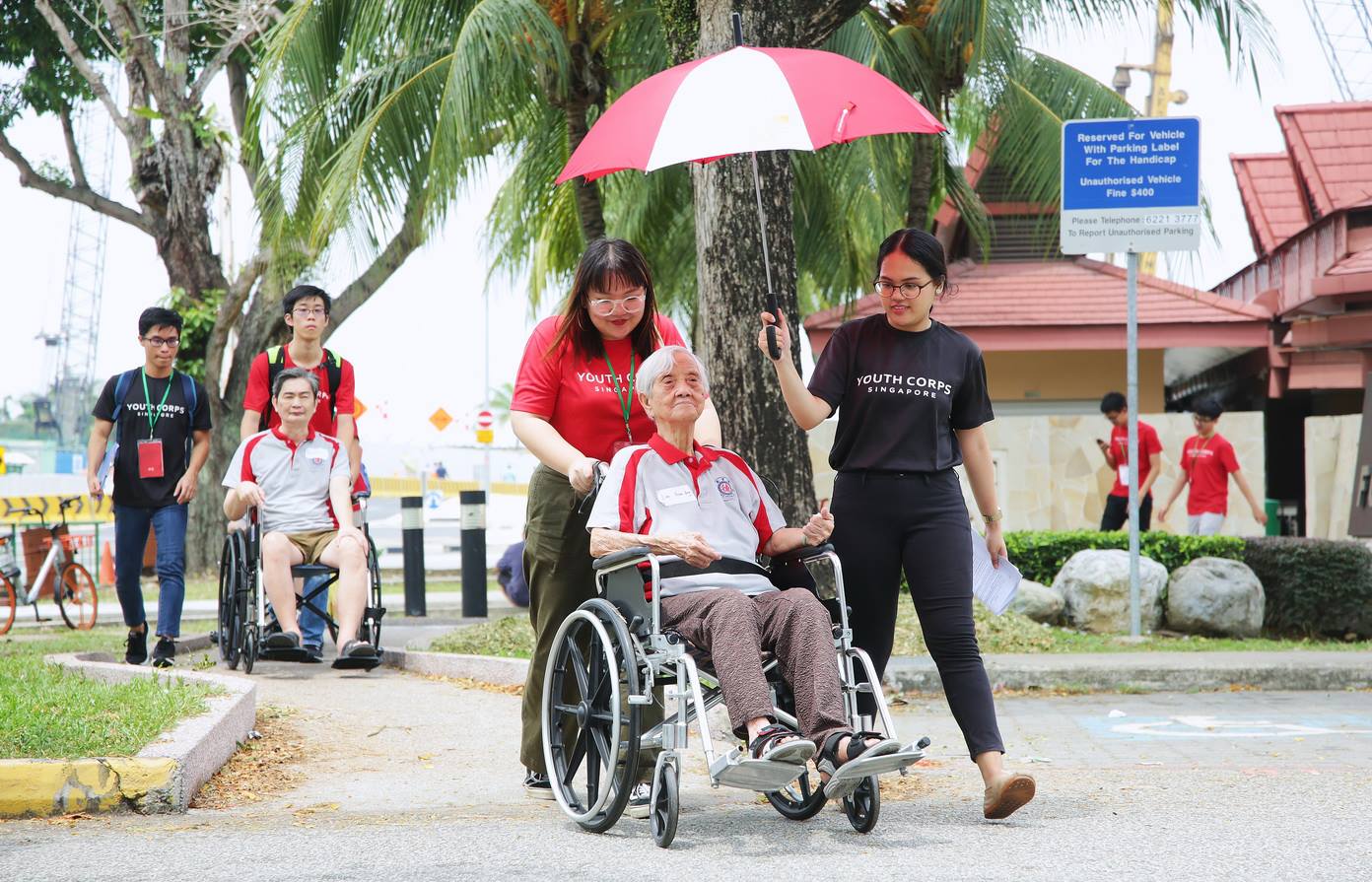 Next, we brought the seniors out to Bedok Food Centre. Via YCS
Next, we brought the seniors out to Bedok Food Centre. Via YCS
During lunch I sat with Angel, an elderly lady known in the home as a huge fan of Milo.
“You know she puts Milo powder into everything? Even porridge! That’s how much she loves Milo,” Hui Ju, my VC, said.
Hui Ju is part of YOLDEN, a six-month long volunteering programme that involves doing physiotherapy with residents of MHFTAS. The sessions are held on weekends, and volunteers are advised to fulfill 70% of it.
“I like that it’s a long-term programme because it allows me to become closer to the residents. Now that they feel more comfortable with me, it’s easier to build a connection with them,” she shared.
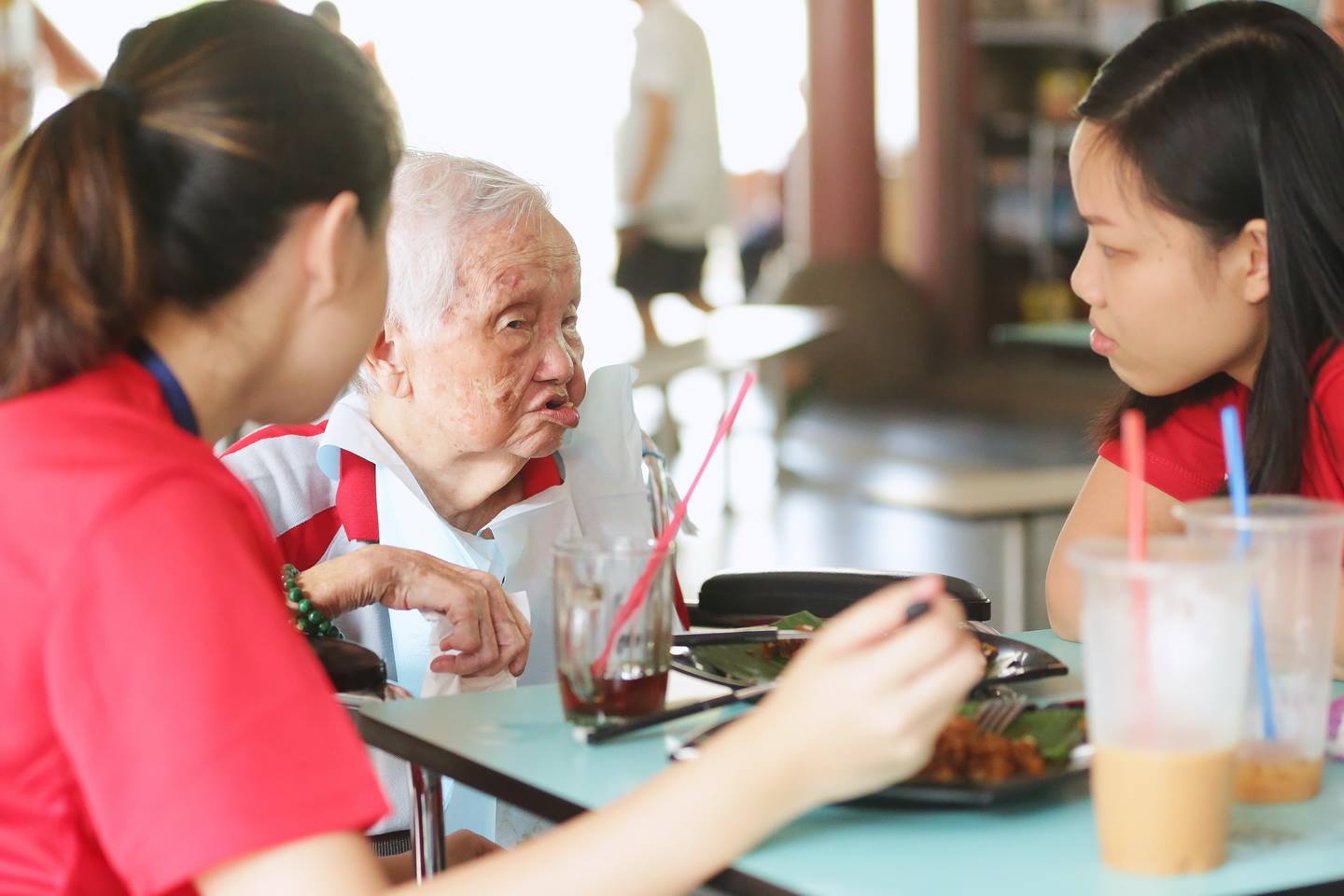 via YCS
via YCS
After the activities, I asked James how he divides his free time on weekends since he’s in camp on weekdays.
“I try to volunteer on alternate weekends. Also, one volunteer session usually just takes up about half a day, so I still have the rest of the day to spend time with my family and friends.”
James was first exposed to volunteerism through a school initiative in Ngee Ann Polytechnic, which made him curious about volunteer programmes outside of school.
“My previous volunteer experiences involved children, so this is my first time helping to look after the elderly. There’s still much to learn, and I’m definitely looking to do more in the future.”
Like Iris, he feels that there are so many ways we can contribute to those in need.
Day 3
June 13, 2018
Activity: Go on an outing with special needs children at Gardens by the Bay, and provide support to their caregivers
As I had never interacted with special needs children prior to that session, I felt a little nervous.
I was grouped with Angeline and Grace, both 18. Grace, who aspires to work in the Ministry of Social and Family Development to help children with special needs, also saw the volunteer session as an opportunity to gain insight on their behaviour.
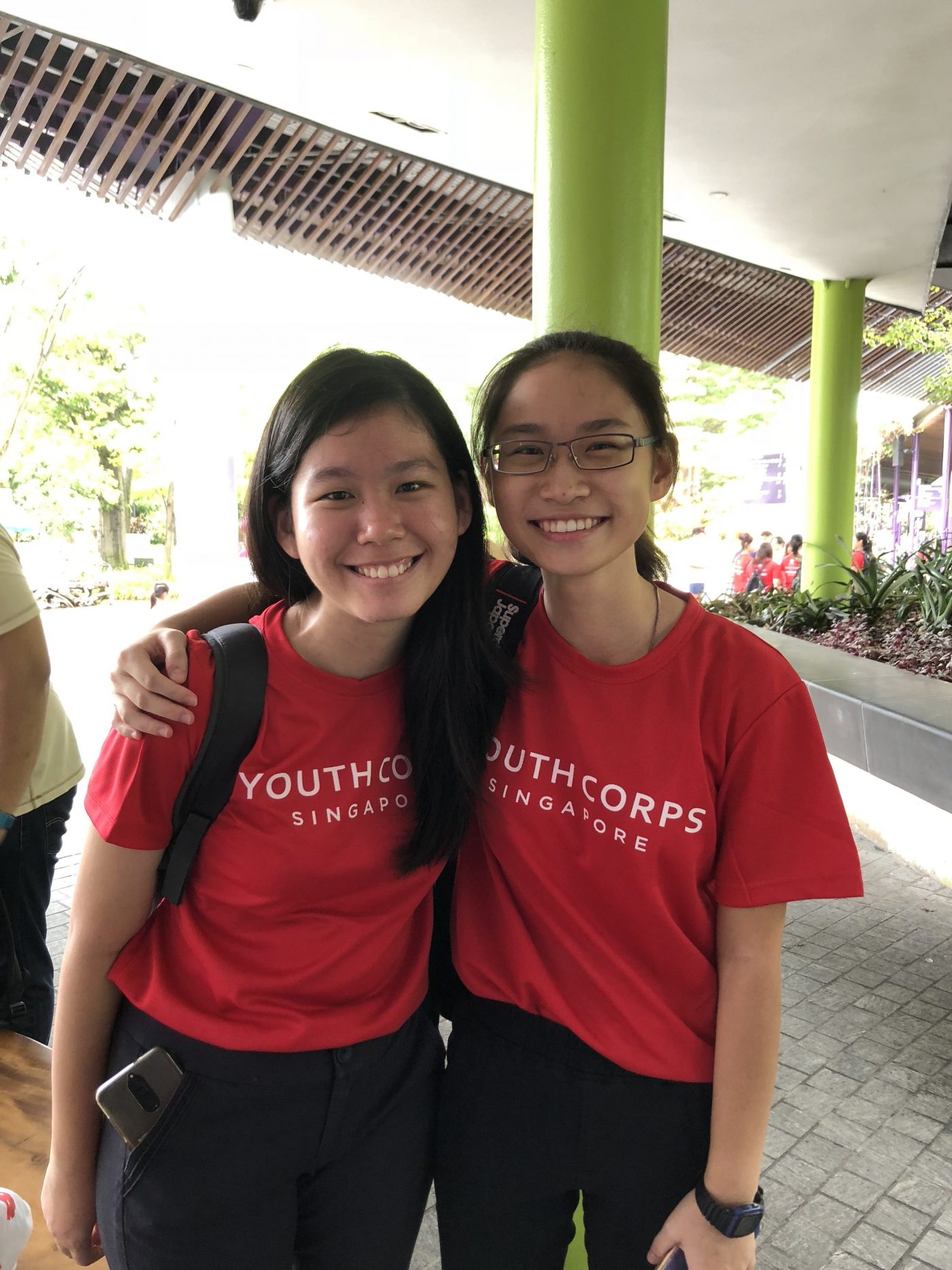 Angeline (left) and Grace (right)
Angeline (left) and Grace (right)
The three of us were introduced to a mother and her two children -- eight-year-old Tom*, who has Autism Spectrum Disorder (ASD), and his ten-year-old sister Jane*.
“Tom doesn’t communicate through verbal cues but he understands what we are saying. The good thing is that he has recently started making sounds, which makes me feel hopeful about his speech development,” their mum told us.
When it was time to bring the children to the playground, Tom wouldn’t budge as he didn’t want to get separated from his mom. After a bit of struggling, we managed to get him to follow us.
Remembering that people with ASD respond better to visual cues, I Googled images of Gardens by the Bay and showed it to Tom. “Do you want to see these trees?”
That didn’t work, because Tom was focused on the water playground ahead. His mum mentioned that he loves swimming, but also gave specific instructions to not get him near the water playground.
Worried that Tom would run into the water, the rest of us tried to distract him by offering colour pencils and engaging him in conversations, but nothing worked.
Just when I thought he was going to launch into a meltdown, Tom ran past the water playground, and straight to the sand area.
It was pure teamwork at one point. Two of us would look after Tom, while the third would stay with Jane.
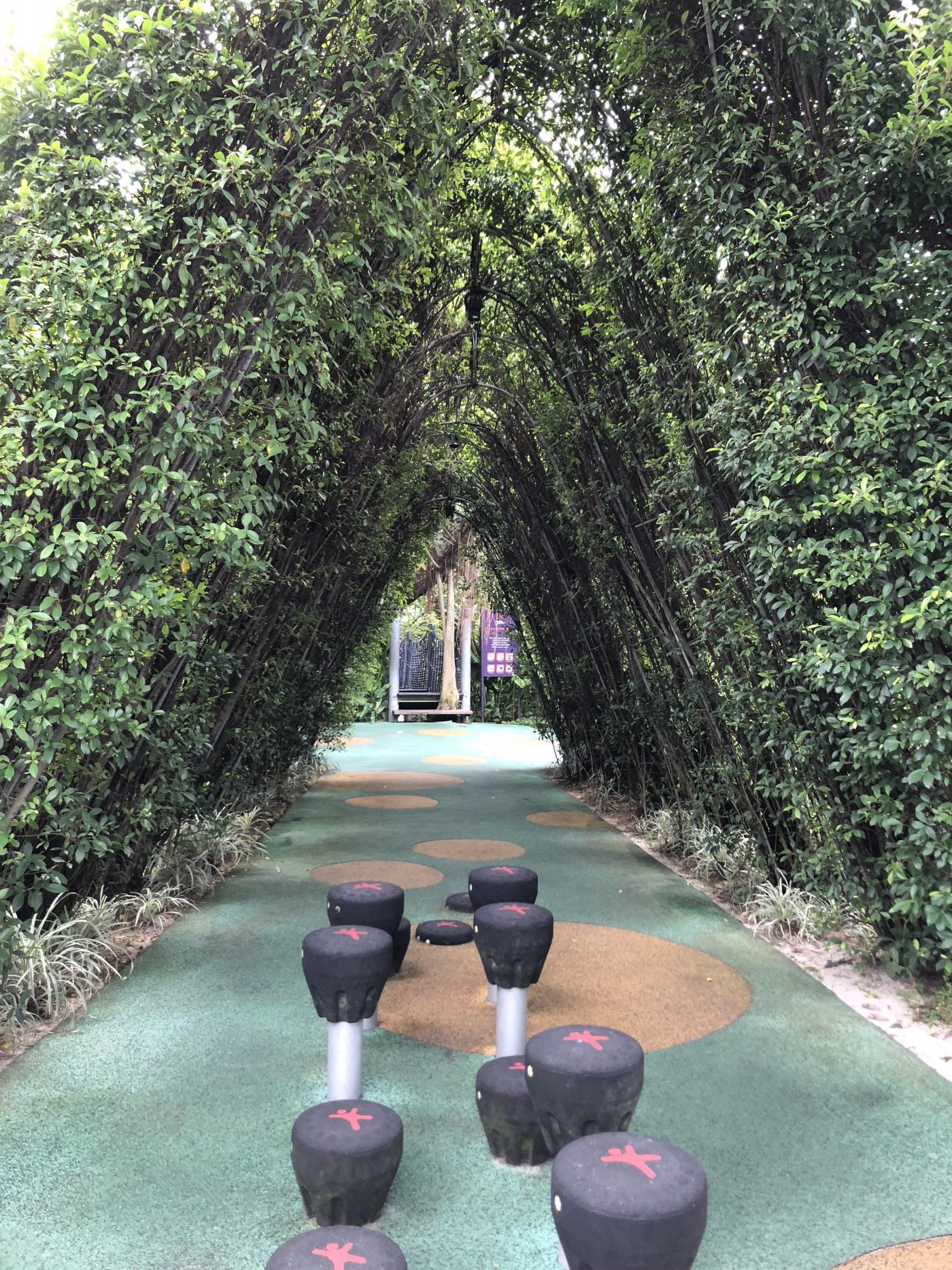
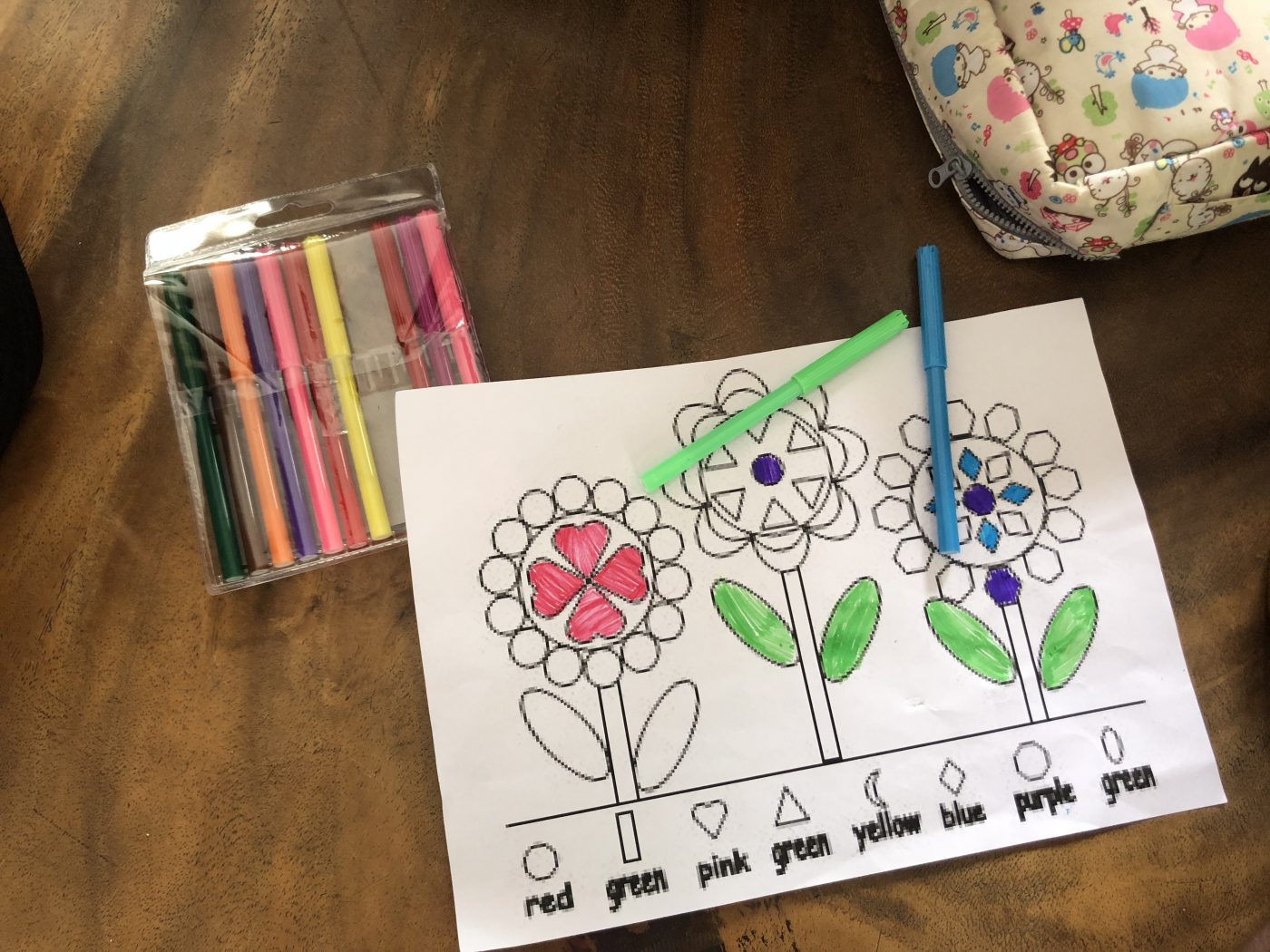 Throughout the entire time, Jane was extremely well-behaved and really helped us in cajoling Tom and getting his attention.
Throughout the entire time, Jane was extremely well-behaved and really helped us in cajoling Tom and getting his attention.
When we got back, their mum thanked us profusely for the letting her take a small break from the kids.
I was surprised at how appreciative she was because honestly, it didn’t require a lot of effort from me. Her gratefulness made me think about the importance of a break for parents with special needs children, and how much work goes into caring for them.
Seeing her reaction made me happy because it felt great knowing I had made a difference -- even if it was just for a while.
Fresh outlook on youth volunteers
Before I started, I thought I would experience some sort of revelation from the volunteer sessions that would make me want to start volunteering regularly. At the end of it, I found that the youth volunteers were the ones who left the biggest impact on me.
They made me realise that people who volunteer are more aware of how the society works, which is why they want to do their part by giving back.
The volunteers were surprised whenever I asked why they volunteer, almost as if the act is so innate that it has never occurred to them not to do it.
When I try to put myself in their shoes and see things from a bigger picture, the concept of volunteering actually makes so much sense. There are people in the world who need help, and people in the world who can give help.
And since the volunteering activities usually just require a bit of time and effort from the more privileged ones, we can “replenish” the help needed in the world by supplying it.
“Perhaps on a selfish level, I also like to volunteer because it makes me feel good knowing I’ve helped someone,” Iris shared with me.
I assured her that that’s definitely not a selfish thought to have.
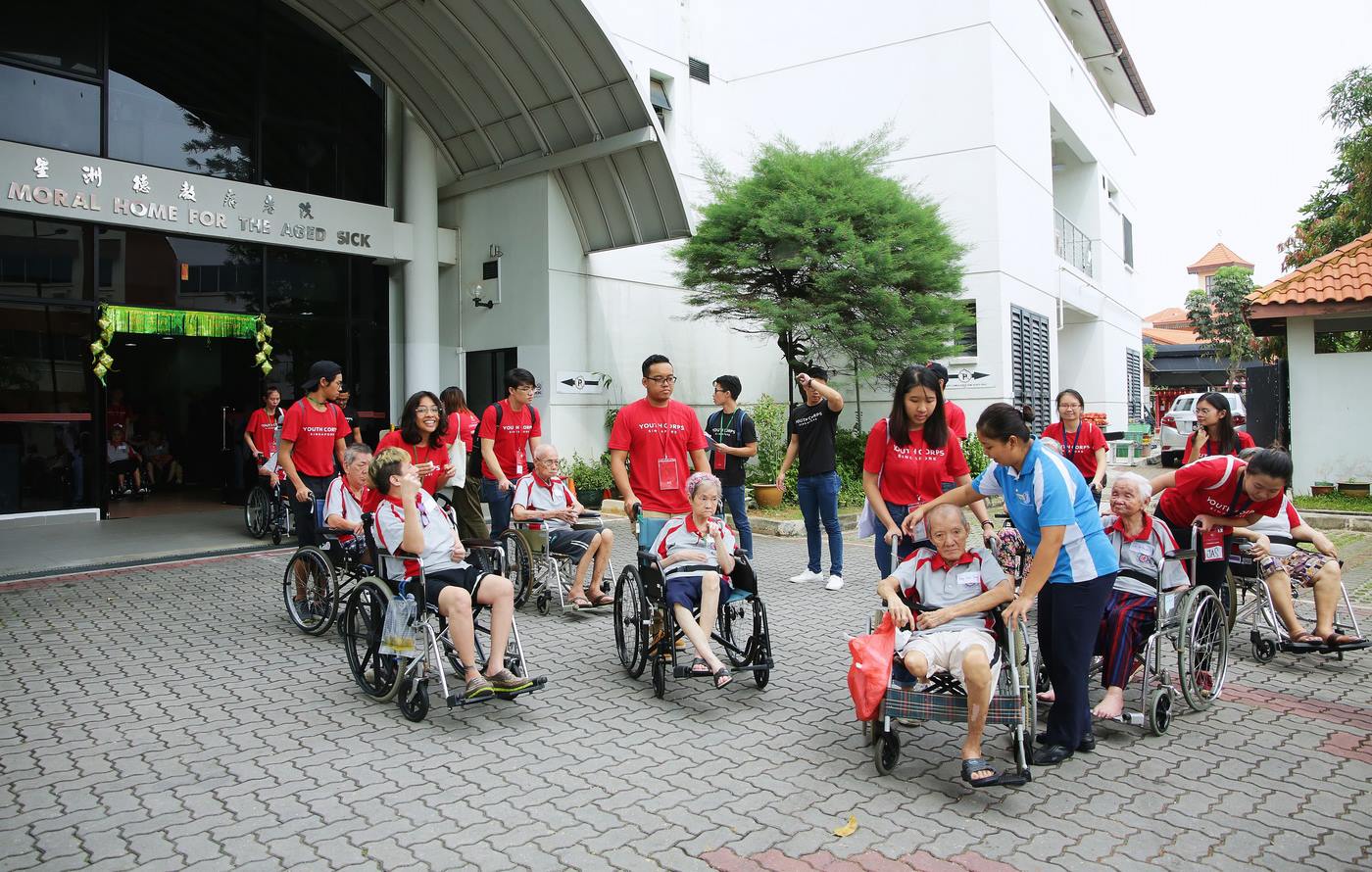 via YCS
via YCS
Granted, three sessions are definitely not enough for me to grasp volunteering fully, but it gave me a good glimpse of the people who volunteer regularly and why they do it.
Volunteering needs commitment -- not only because it provides more help to the people in need, but also because it makes the volunteers feel like they’ve left a greater impact to the community.
And like what Iris mentioned, knowing I had made a difference to the people I helped, no matter how big or small, was a great feeling.
*Names have been changed.
--
If you’re reading this, you’re probably one of the more privileged people in the world.
Give back to the community by signing up to be a volunteer here, or keep yourself updated on the events by checking out their Facebook page here.
There are loads of interesting activities available such as the Big Brother Big Sister (BBBS) programme, which is a series of playdates with children with ASD, and even community development efforts in Vietnam.
This sponsored post in collaboration with NYC makes Mothership.sg’s writers more woke about how the world works.
If you like what you read, follow us on Facebook, Instagram, Twitter and Telegram to get the latest updates.
